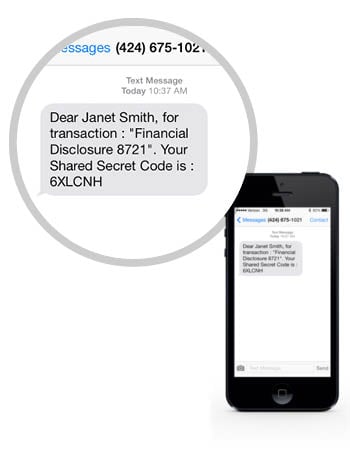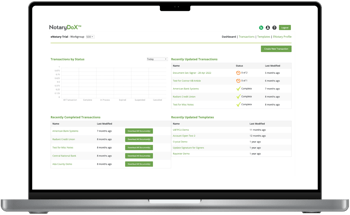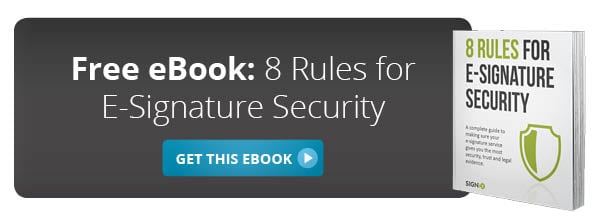1. Email-only Authentication
Description: Proves a user has access to a specific email address
Use Case: Limited situations, when level of risk is very low
In Operation: A user is sent an email with a link to the transaction. If the user receives the email and clicks on the link, SIGNiX considers the user "authenticated," and the transaction continues.
2. Supplied Questions
Description: Leverages information known by the customer about the end user, including account number or other information not widely known outside the relationship between customer and end user
Use Case: Typically used alongside other authentication models to add additional strength
In Operation: An email gives the signer a link to the transaction. Once the signer consents to use e-signatures, they’re asked to answer to questions generated by the customer, which could be shared secrets. If the user successfully answers the challenge questions, SIGNiX considers the user “authenticated,” and the transaction continues.
3. Sponsored/Pass Through
Description: Leverages authentication provided by an integrated partner’s system
Use Case: Typical for integrated models where customer or partner already has trusted authentication models in place and prefers to rely on them based on desired user experience
In Operation: A user may or may not be sent an email with a link to the transaction, depending on the integration. Instead SIGNiX’s client or partner authenticates the user within their own system, according to their own best practices. If the authentication is successful, SIGNiX will grant access to the transaction. In this model, the client/partner assumes responsibility for the authentication of the user.

4. Text Message Authentication
Description: Sends a text message with a one-time password to a user’s mobile phone to prove the signer has access to an email address and a specific cell phone number
Use Case: For customers looking for an inexpensive, convenient multi-factor authentication with a low burden on the end user
In Operation: An email gives the signer a link to the transaction. Once the signer consents to use e-signatures, SIGNiX sends them a text message containing a random, one-time password. If the user enters the text message code correctly, SIGNiX considers the user “authenticated,” and the transaction continues.
5. Knowledge Based Authentication (KBA)
Description: Asks the user very specific questions about past residences, possessions and transactions based on 30 years of public databases to prove that a user possesses significantly privileged information
Use Case: This is the highest form of remote authentication available, and it’s best for transactions where the identity of the signer must be abundantly clear, including loan documents, high value trades or real estate closings
In Operation: An email gives the signer a link to the transaction. Once the user consents to use e-signatures, the user is first prompted for the last four digits of their social security number and date of birth. If they answer correctly, they’re prompted with a set of four multiple choice questions. If the signer successfully answers the questions as outlined above, SIGNiX considers the user “authenticated,” and the transaction continues.

%20formatted-1.png?width=2528&height=739&name=SIGNiX%20Logo%20Main%20(white)%20formatted-1.png)




